 I’m pleased and proud to announce that this ongoing investigative project, with its working title of “Alternate History: Robert Capa on D-Day,” has just received the 2014 Society of Professional Journalists Sigma Delta Chi (SDX) Award for Research About Journalism.
I’m pleased and proud to announce that this ongoing investigative project, with its working title of “Alternate History: Robert Capa on D-Day,” has just received the 2014 Society of Professional Journalists Sigma Delta Chi (SDX) Award for Research About Journalism.
As its website indicates, “The Society of Professional Journalists, founded 1909, is a professional organization that includes broadcast, print and online journalists, journalism educators, and students interested in journalism as a career.” The description of this award category, “Research about Journalism,” reads as follows:
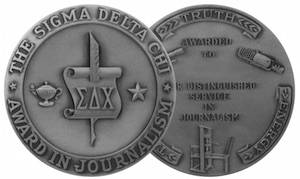 This award recognizes an investigative study about some aspect of journalism. The entry must be based on original research, either published or unpublished, and must have been completed during the 2014 calendar year. Entries may relate to any field of journalism. Judges will consider value to the profession, significance of the subject matter, thoroughness of the research, and soundness of the conclusion. All platforms, including broadcast, are eligible.
This award recognizes an investigative study about some aspect of journalism. The entry must be based on original research, either published or unpublished, and must have been completed during the 2014 calendar year. Entries may relate to any field of journalism. Judges will consider value to the profession, significance of the subject matter, thoroughness of the research, and soundness of the conclusion. All platforms, including broadcast, are eligible.
The award names this inquiry’s three primary contributors — myself, J. Ross Baughman, and Rob McElroy. We’re all deeply honored and gratified by this recognition of our efforts. Announced officially on April 24, the award will be presented during a June 26 dinner and ceremony at the National Press Club in Washington, DC, which I plan to attend.
•
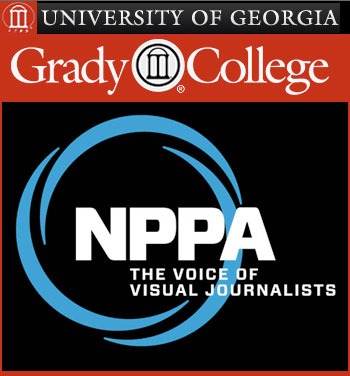 On April 27 I sent the following email to Donald Winslow, editor of News Photographer, house organ of the National Press Photographers Association (NPPA):
On April 27 I sent the following email to Donald Winslow, editor of News Photographer, house organ of the National Press Photographers Association (NPPA):
Dear Mr. Winslow:
As a courtesy, I thought I should notify you that our investigation of the Robert Capa D-Day myth — the project so recently trivialized and dismissed in the pages of your journal — has just received the prestigious 2014 Society of Professional Journalists Sigma Delta Chi (SDX) Award for Research About Journalism.
Knowing that you and your colleagues in the NPPA hierarchy will find this utterly incredible, I urge you to verify it, which you can do right here.
I strongly recommend that you not report this to the NPPA’s membership in any future issue of the magazine, as it might cast doubt on the credibility of News Photographer, which you claim so many unidentified figures consider “the authority” on matters relating to photojournalism — especially after your Facebook boast that your extremely biased feature story on our project represented “the last word” on this particular subject.
I would also advise you to keep this news from Bruce Young, author of that article, “The Fog of War: D-Day and Robert Capa,” as it could embarrass him to learn that a venerable organization of professional journalists actually takes our project more seriously than he does.
It should go without saying that under no circumstances whatsoever should you inform your good friend John Morris of this development. It will only upset him further, and we can’t have that.
Sincerely,
/s/ A. D. Coleman
•
Speaking of Morris, I dug out my 1998 review of his book, as first published in my book review column “Visual Literacy,” which appeared in the gallery guide Photography in New York:
Two books have just appeared concerning the evolution of photojournalism from the mid-1930s onward. John Loengard’s Life Photographers: What They Saw (Bulfinch/Little, Brown) has a simple premise: What do the photographers who worked for Life magazine have to say for themselves? Loengard, himself one of their number, interviewed 44 of them — almost half the total — in the early 1990s, editing the results down to the 200,000 words that, along with some 250 images, pack this volume.
Loengard has a handful of stock questions — what was your relationship like with Life picture editor Wilson Hicks? Do you think of yourself as an artist? But he also knows the particulars of his colleagues’ lives and careers, and gently prods them toward pointed disclosures. Not that they seem to need a lot of persuading in that regard. On the whole, of course, they’re middle-aged to elderly people repeating tales as they’ve told them for decades. In the case of the better-known faces — Alfred Eisenstadt, Cornell Capa, Gordon Parks — these stories are often familiar. But the book is full of commentary by others less frequently heard from: Myron Davis, John Florea, Nina Leen, George Silk, many more. So there’s much here that’s new.
Cumulatively, it adds up to a multi-faceted vision of the glory days of the picture press as seen from inside the most trend-setting of all those publications, as well as an extended-family history of one particular long-term collusion (and collision) between informationally oriented photographers and corporate media culture.
Loengard’s book contains numerous first-hand accounts of censored images, cancelled stories, and general editorial shaping of the news, but little in the way of reflection on the social and political implications thereof. I turned to John G. Morris’s Get the Picture: A Personal History of Photojournalism (Random House, $30 hard) expecting considerably more along those lines. I found, instead, a lively professional autobiography filled with often revealing incidents, at the end of which I knew substantially nothing more about photojournalism than I had before. What’s lacking is any serious critique of the form its author practiced for decades as an influential picture editor for Life, the Ladies’ Home Journal, the Washington Post, and the New York Times, as well as the first executive editor of Magnum Photos.
Notable personages throng the pages — Robert and Cornell Capa, Henri Cartier-Bresson, W. Eugene Smith. Morris’s narrative moves briskly from one anecdote to another, catching the reader up in the working environment of those engaged in this traffic in images. But not till his brief closing chapters does the 81-year old Morris stop to reflect on any of this, and his elementary diagnosis of the cultural function of his field culminates with Edward Steichen’s shopworn 1969 homily about “explaining man to man and each man to himself” — as if the past three decades of discussion and debate over this subject had never taken place. Perhaps a more nuanced analysis of this complex field cannot come from anyone involved — or perhaps we’re just waiting for the thoughtful insider who’s also achieved some critical distance on it all.
•
Browsing Morris’s memoir again, I came across his oft-repeated claim to have influenced Steichen’s conception of “The Family of Man.” The most recent version I’ve found of this appears in Bernard Lebrun and Michel Lefebvre’s 2012 book Robert Capa: The Paris Years 1933-1954 (p. 7):
“We called [this Ladies’ Home Journal series of articles on the lives of farmers in many countries] “People Are People the World Over” (1947). I am proud to say that it served as an inspiration for Edward Steichen’s famous MoMA exhibition ‘The Family of Man.'”
His qualifying this as “an inspiration” and not “the inspiration” for Steichen’s project makes it both unprovable and irrefutable, but …
Growing up as I did a red-diaper baby, surrounded by the labor/left-wing friends and acquaintances who made up my parents’ crowd, and whose children were my Greenwich Village schoolmates, I can testify from personal experience that this “people are people/family of man” notion ran rampant as an article of faith in liberal-left circles during the post-WWII years. I would hardly consider Steichen (or Morris) leftists, just garden-variety liberals. But that concept was everywhere at the time. Case in point: the folk-music revival.
Starting in the 1930s, Josef Stalin himself ordered the suppression and even purging of folk musicians and folklorists in the Soviet Union and its satellites, on the grounds that their celebration of regional, ethnic, and cultural differences expressed non-collectivist attitudes and undercut his goal of achieving a homogenized Soviet mindset. (Less murderously, Charles de Gaulle would later echo that insight when speaking of France: “How can you govern a country that has 246 varieties of cheese?”)
At Stalin’s behest, party hacks wrote new “folk songs” to serve the propaganda needs of the regime. (Mao would institute the same practice in China a few decades later.) As Rachel Goff puts it in her study, “The Role of Traditional Russian Folklore in Soviet Propaganda”:
“The Soviet government thought it was necessary in folklore, as in literature, not to leave things to the writers, but to control the content in order to promote proletarian values.
“By the late thirties the transition from descriptivist to prescriptivist folklore was complete, and the creation of this type of Soviet or “pseudo-” folklore continued until the death of Stalin in 1953. The line between true folklore and folk stylization had been blurred. In just a few decades folklore had gone from being a representation of traditions to a highly controlled means of creating a new Soviet culture.”
Nor did Uncle Joe stop there. Under Stalin, as Izaly Zemtsovsky and Alma Kunanbaeva explain in their 1994 paper “Communism and Folklore,”
Entire peoples and genres were persecuted and, in some cases, destroyed through the government’s efforts to purify folklore. … In essence, the history of socialism and folklore is the history of socialism’s attempts to destroy folklore under the pretext of its preservation.”
Ironically, even as Stalin energetically eliminated all those authentic voices, Stalinist folklorists and folk musicians in the West (e.g., John Lomax and Alan Lomax and Pete Seeger in the U.S., Ewan McColl in the U.K.) not only preserved precious primary-source materials for study but proposed in their efforts at repopularizing folk music that “people were people the world over,” emulsifying all cultural difference. That’s the basic theme of The People’s Song Book (1948), the collection edited by Lomax, Waldemar Hille, Peter Seeger, Earl Robinson, and Irwin Silber — on which I was raised by my left-wing parents. (I still have my copy.) In short, it was common cant in the circles in which Morris and Capa (and Steichen) traveled in those days.
Morris’s claim to have inspired Steichen with his series in the Ladies’ Home Journal thus hardly qualifies as modest; with it he arrogates to himself, as initiator (even if not the only one), a trope that in fact was then prevalent throughout liberal-left circles in the States and across the Great Water. In his authorized account of the picture agency, Magnum: Fifty Years at the Front Line of History (1997), Russell Miller describes it as “a title that seems unbelievably trite today, but which was modish and compelling in the 1940s.” (P. 56.)
I should also add that the feature story in that series drawn from the book that Capa worked on with John Steinbeck, A Russian Journal (1948), completely ignored everything that was really going on in the Soviet Union at the time: the purges, the anti-semitism, the slave-labor camps, the police state. Though the Soviets denounced Capa and Steinbeck as “gangsters” and “hyenas” upon its publication, they couldn’t have ordered up a better piece of pro-Soviet propaganda.
Much of the criticism that “The Family of Man” attracted, at the time and since, has in fact concentrated on this mushy liberal-humanist attitude that emulsifies all cultural difference — so that the inarguable truth that we all get born, eat, sleep, work, experience a predictable variety of emotions, and die overrides such matters as Americans consuming a vastly disproportionate percentage of the world’s resources, or Muslims and Hindus keeping their women pregnant, ignorant, and genitally mutilated. (See Roland Barthes’s review of this show from 1957.) In Get the Picture, Morris himself describes the underlying attitude of the “People Are People” series as “wistful idealism” (p. 131); presumably he’d apply that to the exhibition he claims to have influenced.
If Steichen ever told Morris that his Ladies Home Journal series had “inspired” him, methinks he was simply being kind to a colleague and friend. In the circles in which Steichen traveled during those years, you couldn’t have avoided exposure to this concept. As for the claim that this series “changed America’s view of the world” — give me a break. Strikes me as more of Modest John’s self-aggrandizement, right up there with the ongoing claim that he “saved” or “salvaged” Capa’s D-Day negatives.
•
Note: The Scots folksinger Ewan McColl, whose real name was James Henry Miller, became best known for penning the lugubrious ballad “The First Time Ever I Saw Your Face” for his wife Peggy Seeger (sister of Pete). At least it improved on the lyrics to another of his 300 songs: “Joe Stalin was a mighty man and a mighty man was he / He led the Soviet people on the road to victory.” McColl would eventually become notorious as the man who — through the network of U.K. folk-music clubs he supervised — organized the protests against Bob Dylan’s going electric that entered the cultural-history books with the infamous catcall of “Judas!” during Dylan’s 1966 concert at the the Free Trade Hall, Manchester, England.
Definitely a gent on the wrong side of history. Click here for an intermittently funny but interminable 2012 forum thread in which a cluster of old folkies and neo-folkies from the UK chew on the Dylan/McColl relationship. Less entertaining by far than Inside Llewyn Davis, the Coens’ 2013 film about the U.S. folk scene of that era, but unimpeachable evidence that the pettiness, insularity, and inbreeding of that musical scene endures well into this century.
•
(For an index of links to all posts in this series, click here.)


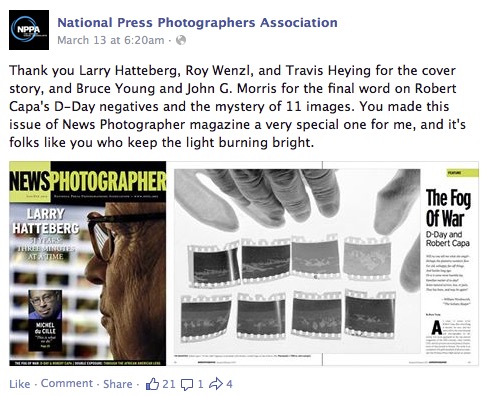
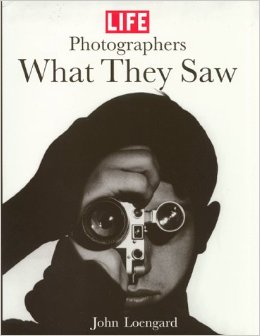
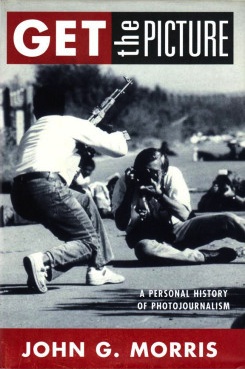
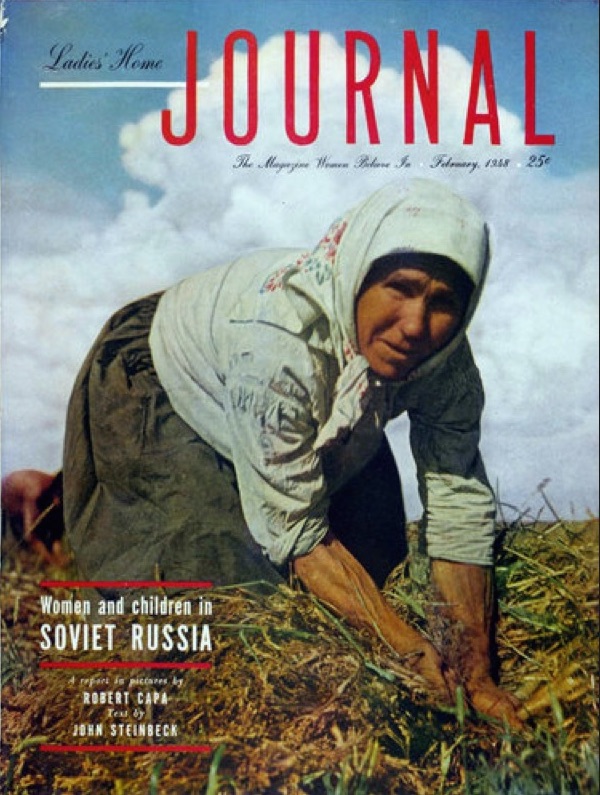
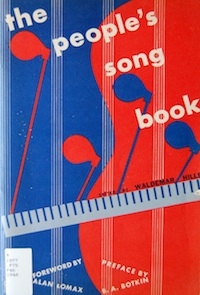
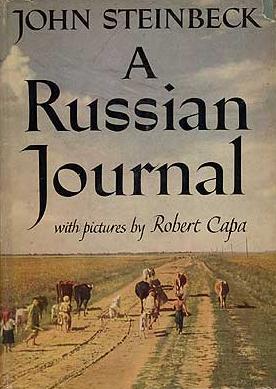
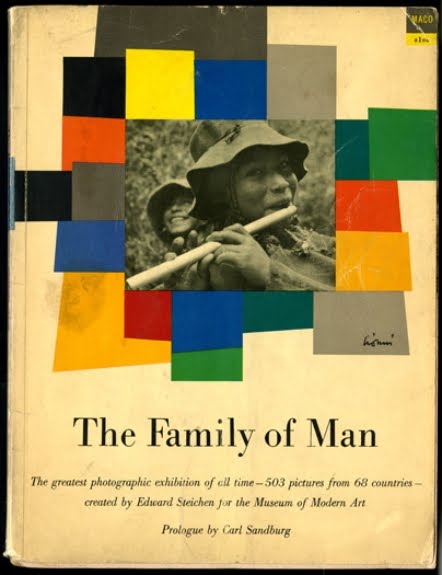





Congratulations on this Award Allan! Nice to see your fine and diligent work duly noted and awarded by an entity that appears to know and appreciate real scholarship and serious journalism. I am sure it will give Mr. Winslow pause … and maybe more. Keep up the good and meaningful work.
He who laughs last, laughs best! Congratulations Allan!!!!!!!!!!! If possible, I’d like to attend your award ceremony and will be happy to pay for a ticket. Your acceptance speech will be icing on the “Capa” cake.
It is ironic that an immigrant, investigative print journalist, Jacob Riis, invented forensic photography just to prove to his apathetic, disengaged reading public that thousands upon thousands of human beings were living in unspeakably dangerous squalor right under their noses … literally a few streets away from their clean, safe middle class New York City neighborhoods. In Robert Capa’s case, it has been at least three generations of professional editors, journalists, historians, and curators who have ignored the forensic evidence right in front of their eyes. Instead it was easier and more convenient to selectively exempt Capa from the rigorous “best practices” routinely applied to lesser lights. To continue to maintain the comfort and security of Morris’s and Capa’s myth-making collusion, which resulted in 70 years of self-serving dissemblance unsupported by the readily available and patently obvious visual and technical evidence, apparently proves that seeing is not believing … for some very stupid people.
XXXX, Cols
Every time another installment of the (possibly interminable?) Capa Alternate History has dropped into my in-box, I’ve done the (now requisite) eyeroll, then read it carefully top to bottom. I’ve come to think of it as The Gift that Keeps On Giving whether you want it to or not. But now it has really delivered. Congratulations!
And also thanks for the fascinating tidbits about the “folk music” “revival.” I continue to delight in various performers and their work from same – but I better not tell you or anyone else which ones! Your links are to the evidence of why I’ll keep quiet; and why I rarely read the commentariat anymore.
Nick
We have some major revelations coming in early May through mid-June (interspersed with posts on other subjects). Barring any unexpected discoveries and/or disclosures, those will round off this investigation. So there is an end in sight.
I admire the stick-to-itiveness of those readers who have actually gone through all these Capa-related posts. We do think it matters, obviously, and we’ve tried to make it worth your while to hang in there. The series goes out with a bang, I guarantee.
As a ringside observer of the folk revival, I found it wonderful. I have (and often play) the albums I cherished from that era, in CD form: Fred Neil; Gibson and Camp at the Gate of Horn; Koerner, Ray, and Glover; Joan Baez; Richard and Mimi Fariña; Judy Collins; the Rooftop Singers; early Dylan; etc. Not to mention the original performers that movement rescued from obscurity: Doc Watson, Mississippi John Hurt, Robert Pete Williams, countless more. And the lore of vocal and instrumental technique, and song-writing, and even instrument-making, that they recovered and revitalized.
Its role in the Civil Rights and peace movements can’t be overstated, and it reached its apogee on August 28, 1963, at the March on Washington for Jobs and Freedom. But it was as hermetically sealed a movement as the Coens’ portrayal in Inside Llewyn Davis makes it out to be, and by ’63 its limitations had become clear. (Ewan McColl actually required performers to sing only songs connected to their own ethnic derivation, in specific styles.) Its enduring legacy, I’d argue, is not a particular song but an image — of the lone singer with an acoustic guitar, standing up and speaking truth to power. That did matter then, it matters now, it will always matter — regardless of writing style, vocal style, instrumentation. To the extent that the folk-music revival kept that image and attitude and practice alive and energized in a bleak, conformist era, it had an influence not just important but crucial.
You’re relentless.
Good for you A.D.